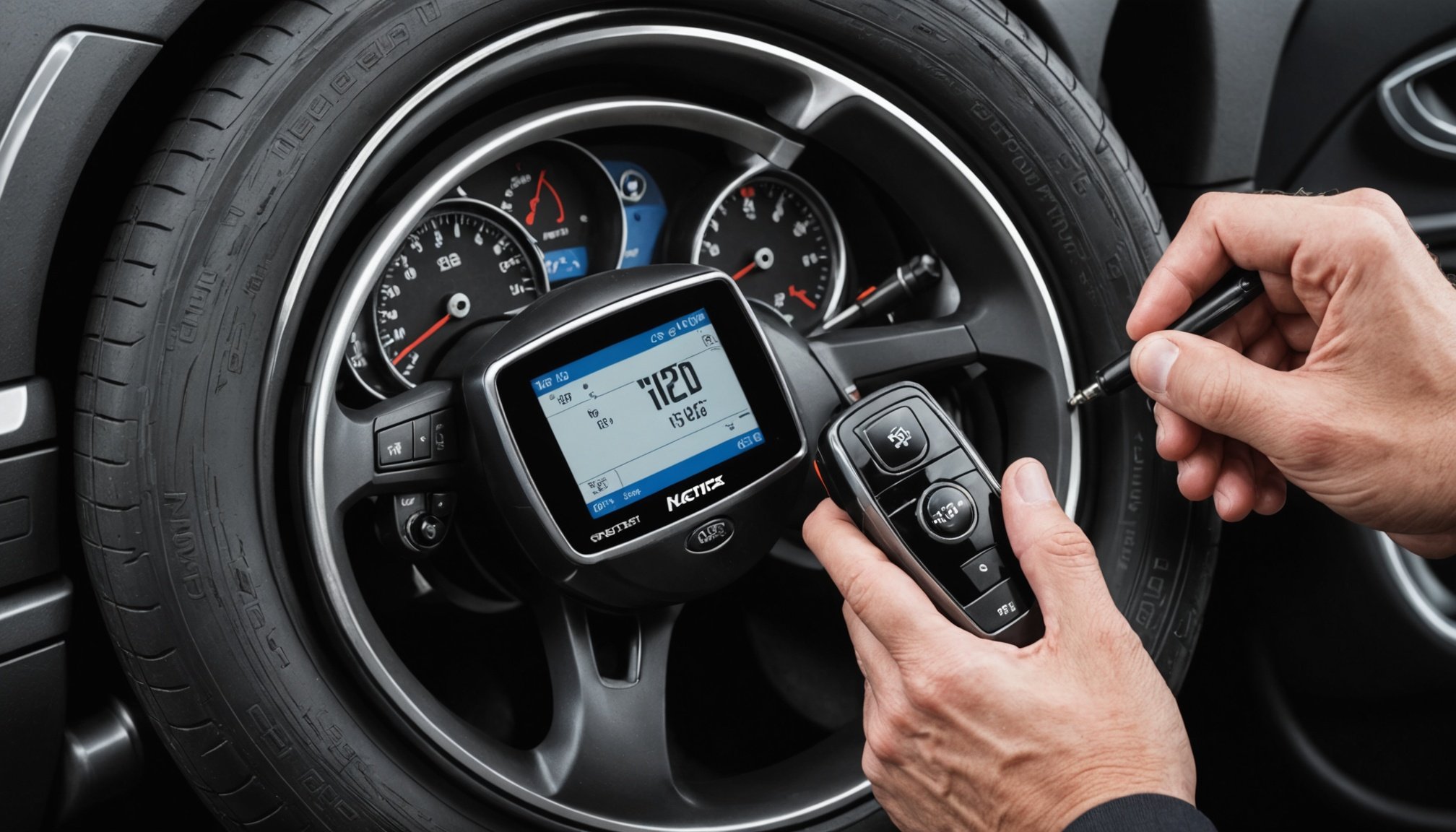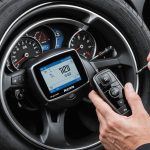Unveiling Revolutionary Advances in Tire Pressure Monitoring Systems for Vehicles in the UK
The Evolution of Tire Pressure Monitoring Systems (TPMS)
Tire pressure monitoring systems (TPMS) have come a long way since their inception, transforming from a simple warning light on the dashboard to sophisticated, real-time monitoring systems. In the UK, these advances are not just about compliance with safety regulations but also about enhancing vehicle performance, safety, and overall driving experience.
From Basic to Advanced TPMS
In the early days, TPMS was primarily about alerting drivers when tire pressure dropped below a certain threshold. However, with the advent of new technology, modern TPMS systems can provide real-time data on tire pressure and temperature, enabling drivers to make quick adjustments to avoid issues and maintain momentum. For instance, Goodyear’s extended partnership with Team De Rooy for the Dakar Rally 2025 includes the use of TPMS that provides real-time monitoring, which is crucial for maintaining the vehicles’ performance in extreme conditions[1].
In parallel : Ultimate guide to selecting the ideal oil for your british electric vehicle: expert tips and insights
How TPMS Works
Understanding how TPMS works is essential to appreciating its benefits. Here’s a detailed look:
Components of TPMS
- Pressure Sensors: These are the heart of the TPMS system, installed inside the tires to measure air pressure and temperature.
- Transmitters: The sensors transmit the data to the vehicle’s computer.
- Receiver: The vehicle’s computer receives the data and processes it.
- Display: The processed data is displayed on the dashboard, often through a warning light or a detailed display screen.
Real-Time Monitoring
Real-time monitoring is a game-changer for car owners. Here’s why:
Have you seen this : Unveiling the latest vehicle anti-theft technologies transforming the uk automotive landscape
- Immediate Alerts: Drivers are alerted the moment their car tire begins to degrade, allowing them to take immediate action to repair or replace the tire[3].
- Optimized Performance: Proper tire pressure improves fuel efficiency, reduces rolling resistance, and enhances the overall performance of the vehicle.
- Safety: Underinflated tires are a significant safety risk. TPMS ensures that drivers are always aware of their tire pressure, reducing the risk of accidents.
Benefits of Advanced TPMS
The benefits of advanced TPMS are multifaceted and far-reaching.
Enhanced Safety
Safety is the primary concern for any vehicle. Here are some ways TPMS enhances safety:
- Reduced Risk of Accidents: Properly inflated tires reduce the risk of tire blowouts and accidents.
- Improved Tread Wear: Even tread wear extends the life of the tires and improves traction.
- Blind Spot Monitoring: While not a direct feature of TPMS, advanced systems can integrate with other vehicle sensors to provide a comprehensive safety profile.
Improved Fuel Efficiency
- Optimized Pressure: Proper tire pressure reduces rolling resistance, which in turn improves fuel efficiency.
- Longer Tire Life: Properly inflated tires last longer, reducing the need for frequent replacements.
Enhanced Vehicle Performance
- Better Handling: Properly inflated tires improve vehicle handling and stability.
- Reduced Maintenance: Advanced TPMS can alert drivers to potential issues before they become major problems, reducing maintenance costs.
Integration with Future Mobility
As the automotive industry moves towards electric mobility and future mobility solutions, TPMS is evolving to meet these new demands.
Electric Vehicles (EVs)
- Specialized TPMS for EVs: Electric vehicles have unique requirements due to their heavier batteries and different driving dynamics. Advanced TPMS systems are being designed to cater to these needs.
- Energy Efficiency: Proper tire pressure is crucial for maintaining the energy efficiency of EVs, as underinflated tires can significantly reduce the vehicle’s range.
Original Equipment and Aftermarket Solutions
- OEM Integration: Many vehicle manufacturers are integrating TPMS as original equipment, ensuring seamless integration with other vehicle systems.
- Aftermarket Options: For older vehicles or those without built-in TPMS, aftermarket solutions are available, offering a range of features from basic to advanced.
Practical Insights and Actionable Advice
Here are some practical tips for car owners to get the most out of their TPMS:
Regular Checks
- Monthly Checks: Check tire pressure at least once a month, and before long trips.
- Use the Right Tools: Use a reliable tire pressure gauge and ensure it is calibrated correctly.
Understanding TPMS Data
- Interpreting Alerts: Understand what the warning lights and messages mean. For example, a steady light might indicate a problem with the TPMS system itself, while a flashing light could indicate a tire pressure issue[4].
Maintenance Tips
- Tire Rotation: Regular tire rotation ensures even tread wear and extends the life of the tires.
- Tread Depth Checks: Regularly check the tread depth to ensure the tires are safe and performing optimally.
Future of TPMS: Intelligent Tires and Beyond
The future of TPMS is exciting and filled with innovative technologies.
Intelligent Tires
- Integrated Sensors: Future tires will have integrated sensors that can monitor not just pressure and temperature but also tread depth and other critical parameters.
- Real-Time Data Analytics: Advanced analytics will provide detailed insights into tire health, enabling predictive maintenance and optimizing tire performance.
Integration with Other Vehicle Systems
- Connected Vehicles: TPMS will integrate seamlessly with other vehicle systems, such as blind spot monitoring and lane departure warning systems, to provide a holistic safety and performance profile.
- Over-the-Air Updates: TPMS systems will receive over-the-air updates, ensuring they stay current with the latest technology and safety standards.
Market Trends and Innovations
The UK market is seeing significant innovations in TPMS technology.
New Entrants and Partnerships
- Goodyear and Team De Rooy: The partnership between Goodyear and Team De Rooy for the Dakar Rally 2025 highlights the importance of advanced TPMS in extreme conditions[1].
- Mobile Tyre Fitters: The rise of mobile tyre fitters brings professional-grade equipment, including advanced TPMS, directly to the consumer’s doorstep[5].
Technological Advancements
- Advanced Sensors: New sensors are being developed that can provide more accurate and detailed data on tire pressure and temperature.
- Data Analytics: The use of data analytics to interpret TPMS data is becoming more prevalent, helping drivers and fleet managers make informed decisions.
Comparative Analysis of TPMS Systems
Here is a comparative analysis of some of the advanced TPMS systems available in the market:
| Feature | Basic TPMS | Advanced TPMS | Intelligent TPMS |
|---|---|---|---|
| Real-Time Monitoring | Limited | Yes | Yes, with detailed analytics |
| Pressure and Temperature Sensors | Yes | Yes | Yes, with additional sensors for tread depth and wear |
| Alert System | Warning light | Detailed display screen | Customizable alerts and notifications |
| Integration with Other Systems | No | Yes, with some vehicle systems | Yes, with all vehicle systems including blind spot monitoring |
| Over-the-Air Updates | No | No | Yes |
| Data Analytics | No | Basic analytics | Advanced analytics with predictive maintenance |
Quotes from Industry Experts
Here are some insights from industry experts on the future of TPMS:
- “The integration of TPMS with other vehicle systems is the future of automotive safety and performance. It’s not just about monitoring tire pressure; it’s about creating a holistic safety profile for the vehicle,” says a spokesperson from Goodyear[1].
- “Advanced TPMS is a game-changer for car owners. It provides real-time data that can help drivers maintain their vehicles better, improve safety, and reduce maintenance costs,” notes an expert from the automotive industry[3].
The evolution of tire pressure monitoring systems is a testament to the continuous innovation in the automotive industry. From basic warning lights to sophisticated real-time monitoring systems, TPMS has become an essential component of vehicle safety and performance. As we move towards a future of electric mobility and connected vehicles, TPMS will play an even more critical role in ensuring the safety and efficiency of our vehicles. Whether you’re a car enthusiast or just a regular driver, understanding and leveraging the benefits of advanced TPMS can make a significant difference in your driving experience.









